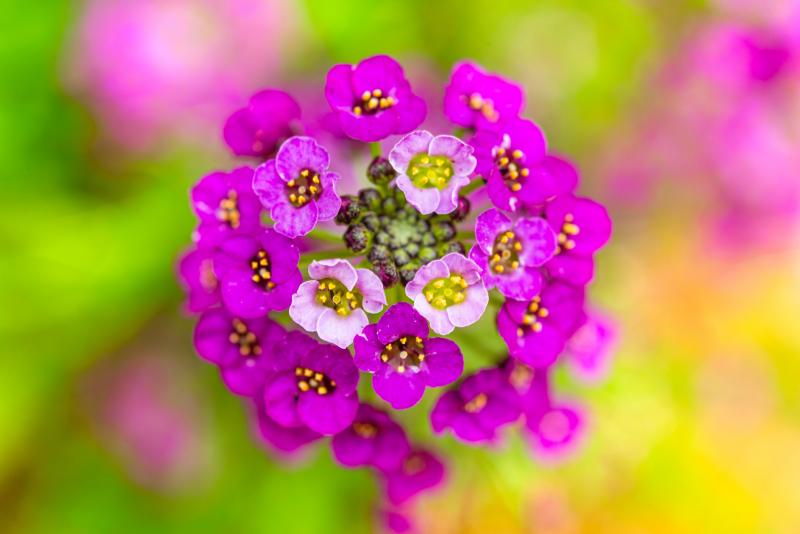Late bloomers abound. Frank McCourt didn’t publish his first book, “Angela’s Ashes,” until he was 66. Norman Maclean was 74 when he published his first and only novel, “A River Runs Through It.” In the garden, we often find we need something to grow and bloom quickly, later in the garden here than we might like.
Annual sweet alyssum (Lobularia maritima) is a fast-growing favorite of beneficial insects including butterflies and ladybugs. These low-growing flowers are great when spilling over the edges of beds and containers. They also work well growing next to a path or walkway. The fragrance varies by variety but is always strongest in the evening. The flowers bloom in shades of peach-apricot, pink, white, rose, lavender and deep purple.
The tried-and-true older varieties grow easily from seed. They often self-sow, reappearing every year. Alyssum plants are not only cold-hardy and able to withstand light frosts, but tolerate droughts as well. They flower best in spring and fall, sometimes taking a break during the hottest days of summer.
The plants grow just 4 to 6 inches high, spreading 6 to 9 inches across. They look nice added to containers, especially when planted along the rim and allowed to hang over the edge. Because alyssum is so short, it is useful as temporary ground cover.
Cornflowers (Centaurea cyranus) are also loved by pollinators. Often called bachelor’s buttons, these are shaped like miniature carnations on top of 36- to 48-inch-tall plants. The lightly fragrant petals come in shades of blue, white, rosy pink and almost black.
You can keep cornflowers in bloom longer by deadheading the spent flowers. You can also direct seed them every two weeks to extend the bloom time. Cornflower is an excellent cut flower and can even be dried as an everlasting. Be sure to pick the flowers just as they open, well before they start to wilt. An infusion of cornflower petals can be used as a treatment for puffy or swollen eyes.
In the vegetable garden, quick-growing crops include radishes, Raphanus sativus, which will be ready to pull up in just 30 days or so. In addition to traditional round red cherry radishes, try the more elegant French breakfast variety with white tips on elongated roots. There are several popular mixes of radishes, so you can get some of every color in one packet.
Because they mature so quickly, plant radishes every week so you have a continuous crop. Once summer heat sets in, hold off planting radishes until it’s closer to fall, or they will bolt and go to seed. Radishes need at least 1 inch of water per week. If you let the soil dry out, the roots will taste woody or pithy.
So, fill in gaps in the garden and gaps in your dreams. Late bloomers in life and in the garden teach us to live in the moment.






















































